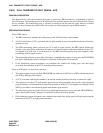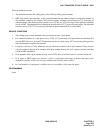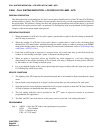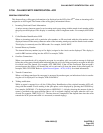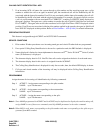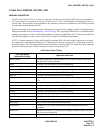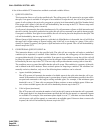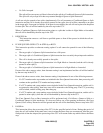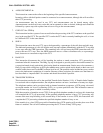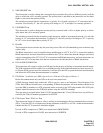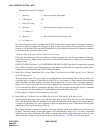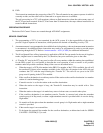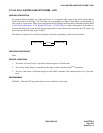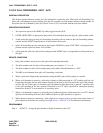
CHAPTER 5 NDA-24282 (E)
Page 230
Revision 1.0
CALL CONTROL VECTOR - ACD
6. ANNOUNCEMENT #n
This instruction connects the caller to the beginning of the specified announcement.
Incoming callers with held parties cannot be connected to an announcement, although this will not affect
their CCV processing.
An announcement may be used in any CCV and announcements can be shared among splits.
Announcements can be used in any order and can be repeated as often as desired, although each should be
followed by a pause step with a pause time at least as long as the announcement.
7. GOTO CCV #x STEP #y
This instruction invokes a pause of two seconds before the processing of the CCV continues at the specified
step, in the specified CCV. The specified CCV can be the CCV that is currently handling the call, or it can
be a different CCV in the same tenant.
8. SKIP %
This instruction causes the next CCV step to be bypassed by a percentage of the calls that reach this step.
The indicated percentage of calls will skip the next step and continue immediately with the CCV step that
is two steps after the SKIP instruction. The remaining calls will not honor the SKIP instruction and will
process the next CCV step. Thus, the SKIP instruction acts as a filter to distribute calls, on a percentage
basis, between two consecutive steps in the CCV.
9. HANG UP
This instruction disconnects the call by breaking the station or trunk connection. CCV processing is
terminated after this instruction. The Hang Up step is designed to provide positive forward disconnect on
a supervised trunk circuit particularly after having heard an announcement. Station users who encounter a
Hang Up step while calling into an ACD pilot number may receive mixed results based on their exact call
scenario at the time as well as the PBX software level in use. The possible results include busy tone, reorder
tone or the inadvertent completion of a transfer. Because of these variations for station users the feature is
best described as “unpredictable” for stations and should be avoided if possible.
10. TRANSFER TO PBX #n
This instruction transfers the call to the specified Transfer Index Number (1-10). A Transfer Index Number
is associated with a telephone number; the telephone number can have a maximum of twenty-two digits.
The telephone number can be associated with an internal extension, an operator, a UCD group, voice mail,
an outside number via Least Cost Routing (LCR), or a system speed dial code. This instruction removes
the call from every queue in which it currently resides.
With the exception of transfers across CCIS, if the specified telephone number is not busy, this instruction
will complete the CCV call processing. If the specified telephone number is busy, CCV processing will
resume at the next step following a two-second delay. If the transfer is across CCIS, this instruction will
complete the CCV processing whether the specified telephone number is busy or not.
If the transfer is to a local UCD group with all members busy UCD queuing will not take place even if the
feature is enabled. The call will continue processing the CCV in an all-busy UCD group.



